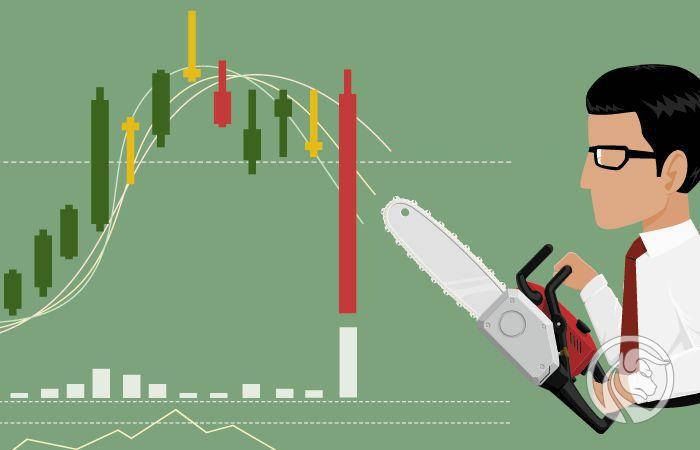Take Profit and Stop Loss - static or dynamic?
Take Profit (TP) and Stop Loss (SL) are the two most popular types of pending orders. They accompany almost every transaction on the forex market. Thanks to them, investors are not forced to constantly monitor the market and control what is happening with an open position. It is the exit points from the transaction that ultimately determine the financial result on the account. Marking places for TP and SL orders is one of the most difficult trade-related pieces. They need to be set so as not to fall out of the market too early (too narrow SL) and at the same time not lose too much (too wide SL). Too close to Take Profit will limit our profits, and too far will reduce the likelihood that it will be achieved. So you have to compromise in determining the exit point from the market. This will make our transaction result optimized.
Static or dynamic values?
Exchange rates of currency pairs depend on many factors. Factors that often change or update, and investors respond to them very quickly. The characteristics of markets are also changing, i.e. the amplitude of price fluctuations, liquidity, as well as the importance of various information at a given time. Once EUR / USD was able to have an average daily variation of 250-300 pips over a period of time. Now 50% and lower values are standard.
READ: Profit-taking order, i.e. how and where to take take profit. Part 1, Part 2.
Investors creating their transaction systems often agree in advance that SL will be set at 30 pips and TP at 60 pips. And regardless of the current market situation. If we implement rigid (static) SL and TP values for a given currency pair in our strategy, they will certainly not be optimized. When we decide on some fixed values, we rely on market research from some historical range. Unfortunately, despite the notion of cyclicality and repetitive patterns, the market never behaves identically. As a result, even the best-optimized rigid parameters may eventually lose their relevance because the characteristics of the market have changed. Focusing on such a solution will require us to constantly monitor the amplitude of fluctuations and constantly optimize the size of SL and TP, so that it does not turn out that we significantly limit our profits or too often note small loss.
Market conditions
The dynamic values SL and TP depend on additional conditions. First of all, support and resistance or average market volatility from a given period should be mentioned. They are much more practical and convenient for the investor. Shaping a given methodology, which will clearly indicate where to set SL and TP, may initially take us a long time. In the long run, however, it should result in less energy spent on optimizing the size of parameters.
READ ALSO: Automatic SL TP for MetaTrader 5 [EA]
If we focus on setting these orders on the basis of support and resistance, then along with the increase in volatility, SL and TP will automatically increase, so all we can optimize is the way of determining these levels. However, if we take volatility as a foundation for determining places for these orders (e.g. ATR indicator), the question of choosing the time interval from which it will be calculated remains, which should not be a major problem, because it will depend mainly on investment style i time interval on which we work.
Stop Loss as Take Profit
Not all use TP's orders and instead prefer to exit a trade with a sliding Stop Loss (manually shifted or via a Trailing Stop - TS). Therefore, there is another problem, which is choosing the TS value or at what point to move the SL yourself and by how much. Well, there is no easy answer to these dilemmas. Even adjusting the TS value to the market volatility will not give us very good optimization. Each situation should be considered individually, examining the dynamics of price changes, especially in the case of small time intervals. Depending on whether the movement was triggered by macroeconomic data, intervention by the central bank, as a result of the start of the stock exchange session or for no reason, one can expect a different behavior of the rate, which translates into the durability of the movement and its scale.
Also, be careful about moving the Stop Loss too quickly on the so-called point break even (BE - position opening point). The fear of losing very often means that we want to secure the transaction as soon as possible. Consequently, it ends up being closed with a zero balance. In the end, we earn nothing, even though we have taken a good bet on the direction of the price change. The constant value at which we will set SL to BE is definitely not a good idea. It should depend, for example, on such a factor as the assessment of the probability that the transaction will be successful. If we have big doubts (objectively assessing the situation) as to the possibility of achieving TP, it is better to secure such a transaction faster.






















![Forex Club – Tax 9 – Settle tax on a foreign broker [Download the Application] Forex Club - Tax 9](https://forexclub.pl/wp-content/uploads/2024/02/Forex-Club-Podatek-9-184x120.jpg?v=1709046278)
![Trading View platform – solutions tailored to the needs of traders [Review] trading view review](https://forexclub.pl/wp-content/uploads/2024/03/trading-view-recenzja-184x120.jpg?v=1709558918)
![How to connect your FP Markets account to the Trading View platform [Guide] fp markets trading view](https://forexclub.pl/wp-content/uploads/2024/02/fp-markets-trading-view-184x120.jpg?v=1708677291)
![How to invest in ChatGPT and AI? Stocks and ETFs [Guide] how to invest in chatgpt and artificial intelligence](https://forexclub.pl/wp-content/uploads/2023/02/jak-inwestowac-w-chatgpt-i-sztuczna-inteligencje-184x120.jpg?v=1676364263)




![Izabela Górecka – “Success on the market depends not only on knowledge, but also on emotional stability” [Interview] Izabela Górecka - interview](https://forexclub.pl/wp-content/uploads/2024/04/Izabela-Gorecka-wywiad-184x120.jpg?v=1713870578)
![WeWork – the anatomy of the collapse of a company valued at $47 billion [WeWork, part II] wework bankruptcy story](https://forexclub.pl/wp-content/uploads/2024/04/wework-bankructwo-historia-184x120.jpg?v=1711729561)
![Adam Neumann – the man who screwed up Softbank [WeWork, part AND] adam neumann wework](https://forexclub.pl/wp-content/uploads/2024/04/adam-neumann-wework-184x120.jpg?v=1711728724)




![The most common mistakes of a beginner trader - Mr Yogi [VIDEO] Scalping - The most common mistakes of a beginner trader - VIDEO](https://forexclub.pl/wp-content/uploads/2024/03/Scalping-Najczestsze-bledy-poczatkujacego-tradera-VIDEO-184x120.jpg?v=1711601376)
![Learning patience: No position is also a position - Mr Yogi [VIDEO] Scalping - Learning patience - No position is also a position - VIDEO](https://forexclub.pl/wp-content/uploads/2024/03/Scalping-Nauka-cierpliwosci-Brak-pozycji-to-tez-pozycja-VIDEO-184x120.jpg?v=1710999249)
![When to exit a position and how to minimize losses - Mr Yogi [VIDEO] Scalping - When to exit a position and how to minimize losses - VIDEO](https://forexclub.pl/wp-content/uploads/2024/03/Scalping-Kiedy-wyjsc-z-pozycji-i-jak-minimalizowac-straty-VIDEO-184x120.jpg?v=1710336731)





![Building a risk management plan - How to do it? [Guide] risk management](https://forexclub.pl/wp-content/uploads/2021/12/zarzadzanie-ryzykiem-300x200.jpg?v=1639495023)
![Automatic Stop Loss on MetaTrader 5 - how to do it? [Video] auto-stop-loss-mt](https://forexclub.pl/wp-content/uploads/2021/11/auto-stop-loss-mt-300x200.jpg?v=1637831541)












Leave a Response